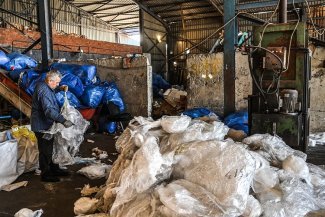China’s unchecked mining expansion and dam construction across the Tibetan plateau, compounded by climate change melting glaciers, are threatening the Yellow, Yangtze, Ganges and other rivers that hundreds of millions of people depend on, say observers calling for talks on a looming crisis.
According to a report released by the Australian Tibet Council, 1.4 billion people in downstream countries like India, Pakistan, Bangladesh and Myanmar depend on water from rivers which have their sources in Chinese-occupied Tibet. The risk of lower water quantity and quality downstream is growing.
“It is sneaking up the international policy agenda,” says John Jones of Free Tibet. “At the moment... it is perceived as a regional problem rather than the global problem it will become.”
Tibet is the source of several of Asia’s great rivers, including the Yellow, Yangtze, Brahmaputra, Indus, and Ganges. The plateau, which has an average elevation of 4000 metres and is widely considered the world’s third pole due its vast glaciers and freshwater resources, plays a crucial role in regulating regional climate.
“Watching China destroy Tibet is like someone going and destroying the whole of Antarctica,” says Michael Buckley, author of Meltdown in Tibet. Buckley and others believe that China’s state-led development is threatening the livelihoods of millions of people living downstream – and it’s getting worse.
Resource exploitation and the building of dams has only accelerated since 2006, when China finished construction of the Golmud-Lhasa railroad. The railway, one of the highest in the world, made the transportation of goods and equipment in and out of Tibet quicker and cheaper.
According to Buckley this is when he began to observe devastating changes. “Everything is getting worse. The mighty rivers of Tibet are being dammed by Chinese engineering consortiums to feed the mainland’s relentless quest for power.”
“Nobody is doing anything to stop the destruction,” Buckley tells Equal Times, “and Tibetans have no rights to protect their own environment.”
The prospect of water wars
The coming water crisis is a result of years of negligence and lack of pressure put on China for its actions in Tibet. Now, if things don’t change, millions may suffer. Observers and activists say action is needed, both to protect Tibet’s water and its people, because if Tibet’s glaciers melt and its rivers dry, the impact could be horrific, perhaps even leading to conflict.
China has not released information on dam construction in Tibet, but outsiders estimate dozens are planned as part of a national goal to massively increase China’s hydropower electricity generation. Some, like the 295-metre high dam project in an ethnic Tibetan region of Sichuan Province (Kham in Tibetan), the third-largest dam in the world, will flood several villages, Tibetan Buddhist monasteries and holy mountains. The impacts on downstream countries are, similarly, little known due to the lack of information available.
“[There is] still a big need for China to have an open discussion over its plans in Tibet, to share data on water flow and the ecological changes that are happening on the plateau,” says Beth Walker, editor of The Third Pole news and research website, and resident expert on water issues in the Himalaya region.
Many are concerned that climate change will accentuate the water crisis. As a high altitude region, the effect in Tibet is similar to what is observed at the north and south poles, which are warming faster than the rest of the planet.
“On the Tibetan Plateau, temperatures are warming three times faster than the global average – and scientists are predicting a 4.6°C rise by the end of the century,” says Walker.
Already, we’re seeing increasing desertification, melting glaciers, and other climate related impacts such as melting permafrost, landslides, avalanches, and loss of natural habitats. Despite limited scientist access, due to political and border issues, what we do know is worrisome.
“The Himalayan snow caps are in meltdown mode due to climate change, accelerated by a rain of black soot from massive burning of coal and other fossil fuels in both China and India,” says Buckley.
These glaciers control the flows of rivers downstream and are crucial in the dry seasons. Tibet holds vast freshwater resources in its thousands of glaciers and alpine lakes. As they melt, runoff increases, meaning less reliable flows.
“Ninety per cent of the runoff from Tibetan rivers flow downstream into China, Vietnam, Cambodia, Laos, Thailand, Burma, Bangladesh, India, Nepal, Bhutan and Pakistan... for drinking, for agriculture, for fishing, for industry,” says Buckley.
Political control
Tibet was independent until it was invaded and occupied by China in 1950. Since the Dalai Lama, the country’s spiritual leader, fled in 1959 control of the plateau’s vast water resources, not to mention its mineral wealth, has been firmly under the control of China. That, many believe, is the source of the problem.
“Fundamentally, Beijing’s priority is what’s in China’s interests, not Tibet’s,” says Jones. “China is short of water and Tibet isn’t.”
Chinese rule has been likened as a form of colonialism, with human rights violations taking place alongside resource extraction. This includes limitations on the use of Tibetan language, the destruction of cultural and religious institutions, a massive influx of Han Chinese migrants, and even the withholding of passports from Tibetans attempting to go abroad.
“The objective evidence of Tibet’s status as one of the world’s most repressed and least free countries is abundant and indisputable,” says Jones.
“Nobody is doing anything to stop the destruction,” says Buckley, “and Tibetans have no rights to protect their own environment.”









